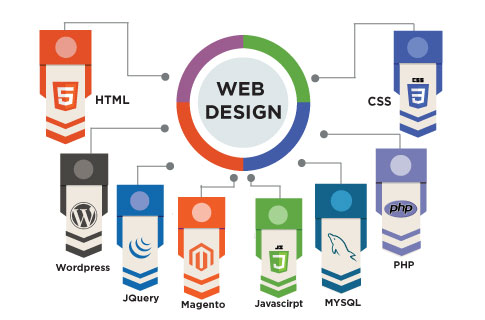- Have any questions?
- (Prasad) +91 96191 46851 | (Parag) +91 99878 20022
- support@pnpwebdesign.com
Unlocking Success with Your Ecommerce Website: A Comprehensive Guide

Unveiling the Power of Ecommerce Websites: Your Ultimate Guide to Success
February 13, 2024
Exploring the Finest Platform for Website Design: Finding the Best Website for Your Needs
February 23, 2024Unlocking Success with Your Ecommerce Website: A Comprehensive Guide

In today’s digital age, having a strong online presence is essential for businesses of all sizes. An ecommerce website serves as the virtual storefront for your brand, enabling you to reach customers around the globe and drive sales 24/7. In this comprehensive guide, we’ll explore the key components of an ecommerce website, from design and functionality to marketing and optimization. Whether you’re a seasoned entrepreneur or just starting your online journey, this guide will provide you with valuable insights to help you build and grow a successful ecommerce business.
-
Understanding Ecommerce Websites:

An ecommerce website is an online platform that allows businesses to sell products or services over the internet. Unlike traditional brick-and-mortar stores, ecommerce websites offer customers the convenience of browsing and purchasing items from the comfort of their own homes. From clothing and electronics to digital downloads and subscription services, ecommerce websites cater to a wide range of industries and niches, making it easier than ever for businesses to reach their target audience and drive sales.
- User-Friendly Design: An effective ecommerce website features a user-friendly design that makes it easy for customers to navigate, search for products, and complete purchases. Clear navigation menus, intuitive search functionality, and streamlined checkout processes are essential components of a successful ecommerce website.
- Mobile Responsiveness: With an increasing number of consumers shopping on mobile devices, it’s crucial for ecommerce websites to be mobile responsive. Responsive design ensures that your website looks and functions seamlessly across a variety of devices and screen sizes, providing a consistent user experience for all visitors.
- Secure Payment Gateway: Trust and security are paramount in ecommerce, so it’s important to integrate a secure payment gateway that encrypts sensitive customer data and protects against fraud. Popular payment gateways such as PayPal, Stripe, and Square offer robust security features to keep transactions safe and secure.
- Inventory Management: Effective inventory management is essential for ecommerce success, ensuring that you have the right products available at the right time to meet customer demand. Inventory management tools and systems help you track stock levels, manage product variants, and automate reorder processes to prevent stockouts and overstock situations.
-
Benefits of Ecommerce Websites:



Ecommerce websites offer numerous benefits for both businesses and consumers, making them an increasingly popular choice for buying and selling goods and services online:
- Global Reach: With an ecommerce website, you can reach customers anywhere in the world, expanding your potential customer base and opening up new revenue streams.
- 24/7 Availability: Unlike traditional retail stores with set operating hours, ecommerce websites are open 24/7, allowing customers to shop at their convenience, day or night.
- Cost-Effectiveness: Running an ecommerce website is often more cost-effective than maintaining a physical storefront, with lower overhead costs for rent, utilities, and staffing.
- Data Insights: Ecommerce platforms offer valuable insights into customer behavior, purchasing patterns, and product performance, allowing you to make data-driven decisions to optimize your business operations and marketing strategies.
-
Strategies for Success:



Building a successful ecommerce website requires more than just setting up an online store. Here are some strategies to help you maximize the potential of your ecommerce business:
- High-Quality Product Photography: Invest in professional product photography to showcase your products in the best possible light and provide customers with a clear understanding of what they’re purchasing.
- Search Engine Optimization (SEO): Optimize your ecommerce website for search engines to improve visibility and drive organic traffic. Focus on optimizing product descriptions, meta tags, and URLs with relevant keywords to improve your website’s ranking in search engine results.
- Social Media Marketing: Leverage social media channels such as Facebook, Instagram, and Pinterest to promote your ecommerce website and engage with your target audience. Share product photos, behind-the-scenes content, and customer testimonials to build brand awareness and drive traffic to your website.
- Customer Reviews and Testimonials: Encourage satisfied customers to leave reviews and testimonials on your ecommerce website to build trust and credibility with potential buyers. Positive reviews can help sway purchasing decisions and improve conversion rates.
Ecommerce Website Conclusion:
In conclusion, an ecommerce website is a powerful tool for businesses looking to expand their online presence and reach a wider audience. By understanding the key components of an ecommerce website, leveraging its benefits, and implementing effective strategies for success, you can build a thriving ecommerce business that drives sales, fosters customer loyalty, and achieves long-term growth. Whether you’re launching a new ecommerce venture or looking to optimize an existing website, the insights provided in this guide will help you unlock the full potential of your ecommerce website and achieve your business goals.





